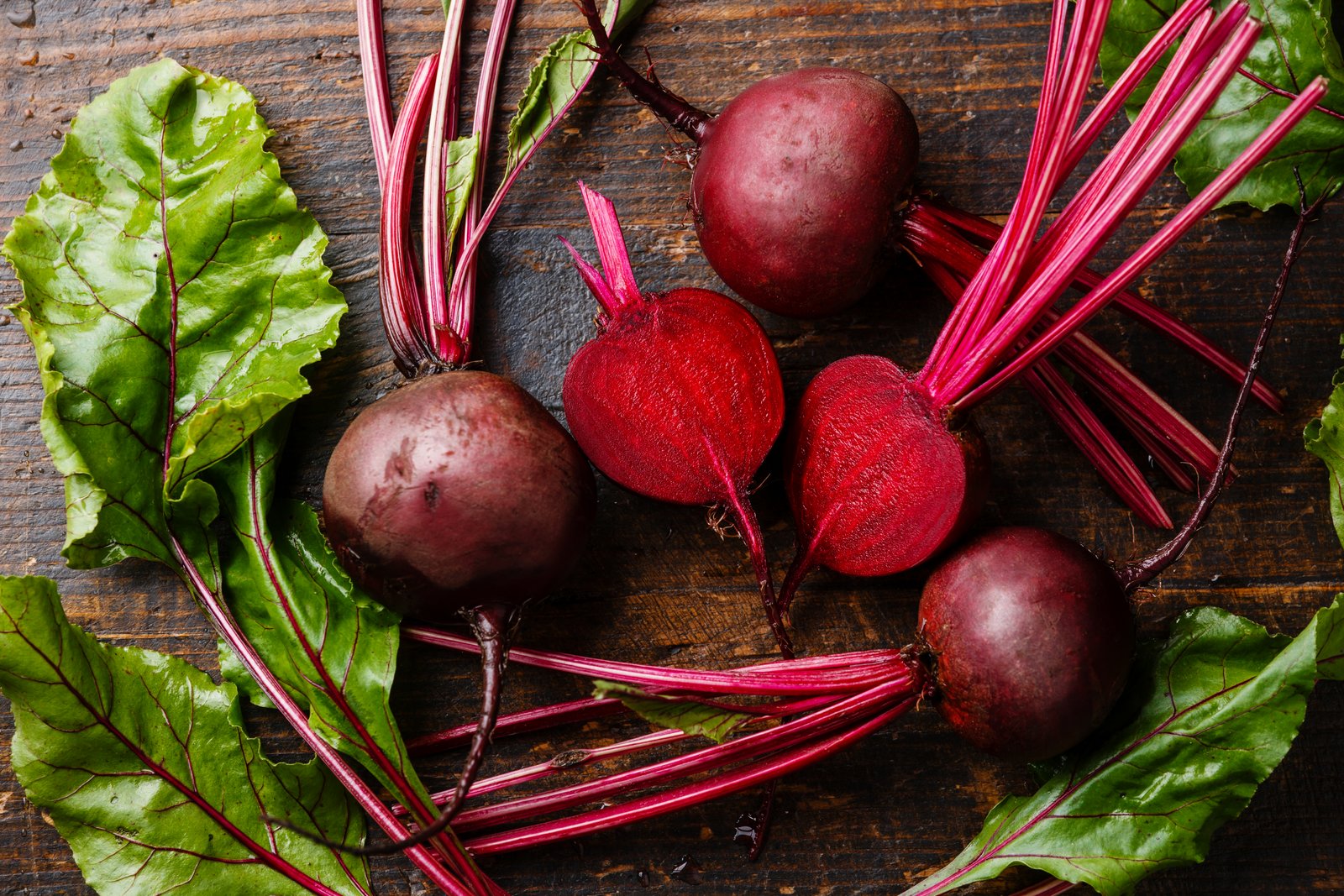
“It’s around the table and in the preparation of food that we learn about ourselves and about the world.”
~ Alice Waters
Win-Win: More Nutrient-Density & Less Food Waste
A key component of a healing diet is nutrient-density and diversity. In the paleo AIP community, the list of foods to avoid often gets the most attention. But simultaneously, we need to expand the list of nourishing foods that we eat. One great way to do that is to look at the produce in our kitchens and see which edible parts we’re throwing away. Often, they are the most nutritious! This is typical in the United States, where the food culture is based on abundance and convenience. We throw away 30-40% of the food supply. There are movements to address this on a larger scale, such as “ugly” produce companies that reclaim fruits and vegetables that weren’t considered pretty enough to sell. Feeding America is a non-profit organization that works with farms and restaurants to deliver excess food to food banks instead. And chefs are aware of this problem as well, with many revamping their menus to reduce food waste at the source. We can do the same thing at home.
1. Celery Leaves
When I was growing up, my mother bought pre-packaged, trimmed celery. I never even knew celery had leaves until I started shopping at the farmer’s market as an adult. But it turns out these leaves are delicious and nutritious. Just like the rest of the plant, celery leaves are full of anti-inflammatory antioxidants. They even contain more vitamin C than the stalks. When shopping for celery, choose a bunch that looks crisp and compact with no splaying stalks. The leaves should be pale to bright green in color and free from yellow or brown patches. When you get home, eat those leaves first. You can add them raw to salads, chop them up for a flavorful garnish, or cook them in soups and stir-fries.
2. Leek Greens
When it comes to recipes that include leeks as an ingredient, almost all of them use the white parts and tell us to throw the greens away. But it turns out the greens are an excellent prebiotic (food that supports a healthy gut microbiome). They also contain folate, a B vitamin which is essential to many body processes, including methylation. My favorite way to eat leek greens is sliced and roasted. They’re a delicious alternative to kale chips. Here’s a recipe.
3. Strawberry Leaves
When I was a waitress, I remember being taught a trick in the kitchen – using a straw to cleanly remove the leaves from the strawberry with less loss of the actual fruit. I was thrilled! It never occurred to me that you could eat the leaves, but it turns out that the leaves are especially high in antioxidants, containing 5 times more than the fruit. In traditional herbal medicine they’re thought to have digestive benefits as well. I realize the texture is quite different from the fruit, so eating a strawberry whole with the leaves may not be appealing. However, when it comes to smoothies, the leaves blend in beautifully. You can also make a flavorful infused water with the tops of the strawberries including the leaves.
4. Beet Greens & Stems
In my opinion, beets are meant to be eaten whole with all their parts. Not only does it offer more variety in flavor and texture, but my husband and I both digest beets better when we cook the greens and stems alongside. Mother nature knows! The greens also contain an abundance of vitamins A, C, K, and magnesium. It doesn’t make sense to throw that nutrition away. Here’s a simple recipe: Sauté the chopped bulbs and stems together with a little sea salt and a healthy fat. (My favorite for beets is duck fat.) When they’re fork-tender, layer the beet greens on top, cover the pan, and take it off the burner. In just a few minutes, the greens will have wilted perfectly. Toss and serve! If you’d like a fancier recipe for a special occasion, try my Roasted Beets and Carrots with Grapefruit Glaze.
5. Chard Stems
It’s crazy to me that some recipes say to throw these stems away. Most varieties of chard have brightly colored stalks, and those colors represent beneficial phytonutrients. Try my favorite recipe for Rainbow Chard with Bone Broth and Bacon, which incorporates both the leaves and the stems.
6. Kale & Collard Stems
These stems are a little harder to love, because they’re both tough and bitter. The good news is that cooking removes both of those negative qualities while preserving their nutrition (which is equal to the leaves). One method is to blanch the stems (you briefly boil and then plunge them into ice water, which softens and removes bitterness while keeping their color bright and fresh). Then you can chop them up and add them to salads. Or if you’d like to feature them in their own recipe, try this one for Smoky Sautéed Kale Stems (you can also substitute collard stems).
7. Cauliflower & Broccoli Stalks & Leaves
While the florets get all the attention, the rest of these plants have the same nutrition, including the stalks and leaves. In fact, the leaves contain phytonutrients not present in the florets and also have the most beta-carotene. It’s actually very easy to incorporate the whole vegetable into your cooking. Any recipe that calls for the florets can also incorporate the stalks and leaves. Just be sure to slice the stalk into smaller pieces, so it cooks as quickly as the florets. Here are two of my favorite cauliflower recipes: Instant Pot Garlic Mashed Cauliflower and 4 Flavors of Cauliflower Rice.
8. Citrus Peels
Just like the fruits and vegetables mentioned above, the nutrients in citrus fill the whole fruit, including the peel. This includes Vitamin C, potassium, folate, and phytonutrients. And some of those (like anti-inflammatory flavanoids) are highest in the peel. Did you know that citrus-based essential oils are made from the peel, not the flesh of the fruit? So, how do we incorporate these into our diet when the peel is tough and bitter to eat? Zesting, my friends! A zester is a special grater that gives us easy access to the nutrition of the peel. So, the next time you grab some citrus to eat, remove the zest first. You can add it to almost anything. Zest adds a bright flavor along with its nutrition to vegetables, fish, and chicken recipes. You can also add it to salads and smoothies. And if you don’t want to use it right away, here are two great options: (1) Freeze the zest in an air-tight container. (2) Make your own citrus-infused salt.
9. Herb Stems
I can’t count the number of times I’ve carefully chopped parsley and cilantro, trying to get only the leaves and not the stems. It turns that was completely unnecessary! With soft-stemmed herbs, the stems contain both flavor and nutrition. They can be used alongside their leaves, or even used separately because they keep longer. If the leaves on the fresh herbs in your fridge are looking wilted but the stems are still firm and retaining their color, discard the leaves and use the stems. For woody stems like thyme and rosemary, those won’t taste good chopped up into your food, but they’re great for flavoring soups and stocks. If they’re long enough, you can even use them as grilling skewers and they’ll infuse the grilled food with their flavor. (Just soak the woody stems in water for 30 minutes before using so they don’t catch fire on the grill.)
10. Vegetable Peels & Ends
First of all, many vegetables don’t actually need to get peeled. They just need to be scrubbed clean and can be used in most recipes with the peels remaining. (Beets and carrots, for example). But even when we’re conservative about what we cut away, some scraps will remain. A great way to use them is homemade broth. You can make a vegetable broth or add them to your next batch of bone broth. Keep a container in the freezer and add scraps each day, then use them when the container is full. Good vegetable choices for broth are the peels and ends from organic vegetables. For non-organic vegetables, it’s best to compost those instead since the pesticides are highest in the peels. Also avoid using any scraps that are moldy or covered in dirt. While onion ends are wonderful in broth, avoid using the brown papery skins – they tend to make the broth bitter. While beet skins and ends can be used in broth, be aware they’ll turn your broth pink or purple. And lastly, avoid using scraps from the brassica vegetable family (cauliflower, broccoli, cabbage, rutabaga, and turnip) because they tend to take over the flavor of the broth.
You May Also Be Interested In
Credit: image at top of page purchased from iStock.

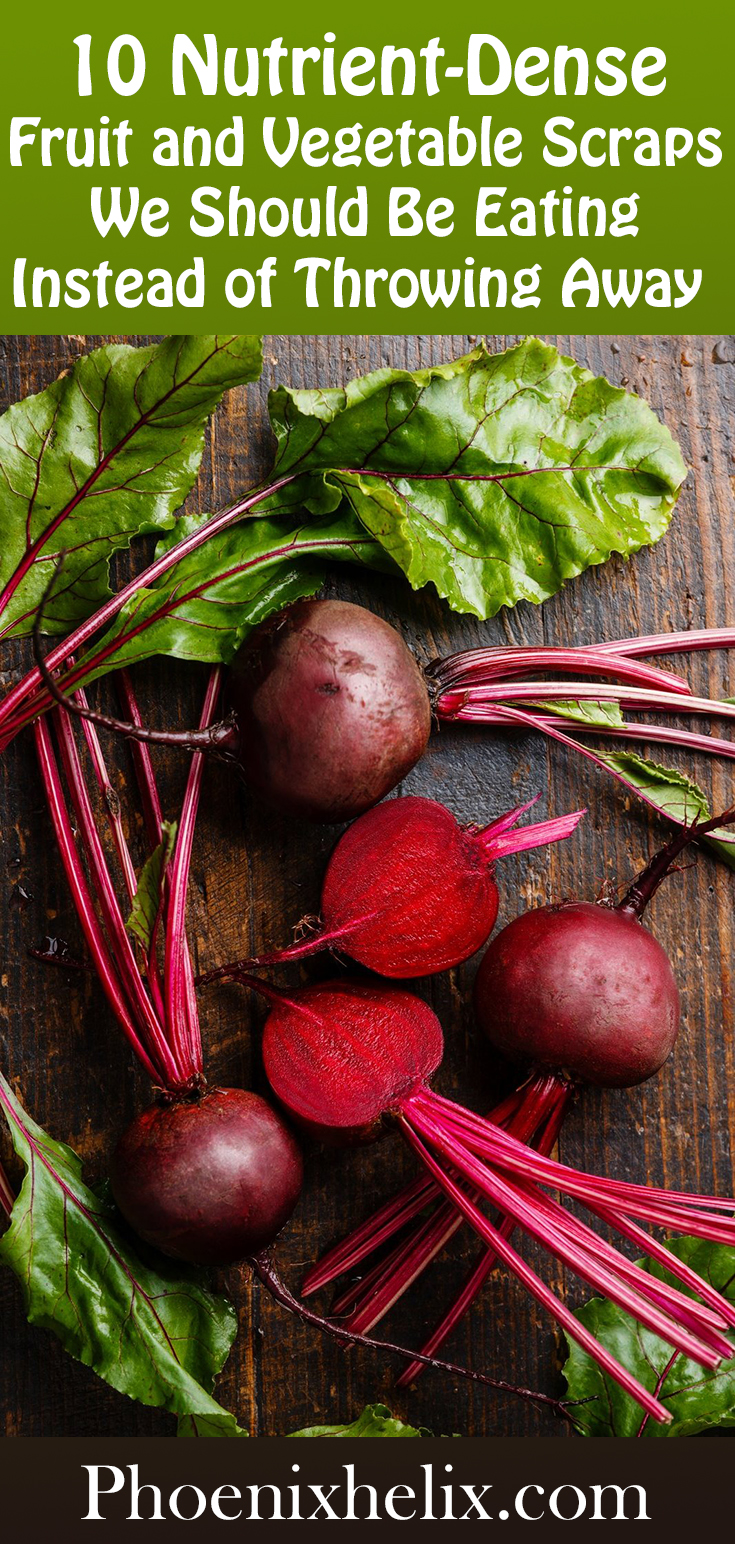

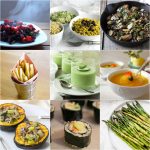

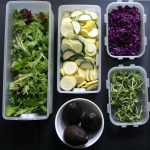

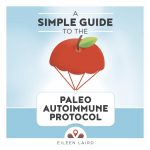


I have one celery plant in my garden, and have been clipping leaves off all summer to add to all sorts of dishes. The plant keeps growing. I can also clip off young stalks and the others continue to grow. For that matter, the base of a store-bought celery plant is usually able to produce new roots and become a “new” plant. It takes a while, but worth a try!
Vegetables from your own garden are the most nutrient-dense of all! Thanks for those extra tips, Quinn.
Thank YOU, too! These are all great tips. I never thought of eating the strawberry caps, but will try it now!
Great article. While I use my most of my veggie trimmings, I never thought to try roasting leek stems. I will next time. I had been using them in my bone broths. Same w/onion skins (I use red onions because I prefer the flavor) ever since I read that they contain a lot of quercetin.
I was shocked when I first heard you could eat the green leek stems, too, but I love them now! Great tip on red vs. brown onions.
Love this! Some of it I knew, most I didn’t. Thanks so much for sharing.
You’re so welcome!
THANKS!
You’re welcome, Sue!